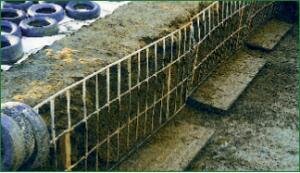website | Farm Tech
Time to rethink wintering?
 |
Self-feed silage Working well on a number of farms
|
10-09-2007 | webmaster
It?s a drag on time and profitability, and most will agree 100+ days? grind shifting break fences and feeding out does nothing for your sense of humour.
Looking at financial accounts, it is not uncommon for deer farmers to spend more than a quarter of their total Farm Working Expenses on getting their deer through the winter, be it on brassica crops, baleage, concentrates or combinations of them all. Costs can be in the range of $15?$20 per stock unit (su).
Now I know what you?re thinking ? why don?t we stock our farms according to when the grass is growing and cut the supplement out of the system? Yes, this is the most efficient biological system, but finding profitable trading options that load animals on in the spring and off in the autumn is hard to do, especially if everyone has the same plan.
If deer are to regain a competitive edge over sheep and beef as a land-use option in the south, then wintering efficiency on supplements needs to be addressed.
Right from the start of the two Sustainable Farming Fund Focus Farms this has been a hot topic of debate, particularly on John and Jacky McLean?s property ?Coleraine? near Lumsden. Prior to the Focus farm project beginning in July 2005, their wintering system involved rotating breeding hinds around paddocks and hill blocks, feeding up to half their daily feed requirement as baleage. With all the pasture required for hinds, weaners were wintered on swedes. As stock numbers expanded, this system proved both costly and an inefficient use of time. John was spending up to 250?300 hours feeding out by tractor each winter, leaving very little time for usual winter farm maintenance, and it made getting weekends off-farm very difficult. Something had to give.
Analysis of the true costs of different feed options showed there were better ways. Feeds were assessed not only on the cost of making or purchasing them, but also on the cost of feeding out, the opportunity cost of having the paddock out of production producing winter feed and the final utilisation of the feed. The realistic options that were open to the McLeans are presented in Table 1.
Table 1: Coleraine supplement costs (c/kg DM)
| |
Grass baleage |
Self-fed grass silage |
Hay |
Ridged swedes (10 T DM/ha) |
Urea (10 kg DM:kg N) response |
Feed Barley |
Grow/Make/Buy in
|
21.4 |
13.4 |
13.4 |
9.9 |
18.4 |
40.4 |
Feeding out
|
12.5 |
0.7 |
10.8 |
3.7 |
0 |
1.2 |
Opportunity cost
|
9.2 |
9.2 |
9.2 |
11.3 |
0 |
0 |
Total cost
|
43.1 |
23.3 |
33.4 |
24.9 |
18.4 |
41.6 |
Note: Presented costs rely on assumptions specific to Coleraine. Costs will differ substantially between farms. For example baleage could also be self-fed.
The most attractive option, and one that was already working successfully on a number of other properties, was to move the hinds to self-feeding silage. The change was made for the 2006 winter at both Coleraine, and Grant and Andrea Cochrane?s Otago Focus Farm. Both have found this move highly successful.
Silage pads were built on the two farms in blocks ranging from 8?16 ha. While completely different in many respects, the blocks chosen shared some characteristics in that they were warm and well sheltered, free-draining (based on rock) and allowed deer plenty of scope. Herds of 500?700 hinds had 24-hour access to single 12?15-metre silage faces, feeding through steel barriers. Rarely were more than a dozen hinds sighted at the pit face at any one time, and over the winter only a handful of hinds had to be removed from the herds due to deteriorating condition.
The system is a work in progress with improvements still to be made, but initial analysis showed the McLeans made a cash saving of $8/su in 2006, while the time involved in feeding 1,000 hinds dropped from around 20 hours per week to 2?3 hours.
On top of this there were two additional benefits noted ? a dramatic increase in spring pasture growth and the ability to winter the best 200 weaners on pasture.
The observation of more spring growth was based on the potential to increase carrying capacity. How much of this increase can be put down to the self-feeding system taking hinds off pasture over winter has been confounded by other management changes that have been made (summer/autumn rape crops, increased subdivision, etc), but it stands to reason that while little extra pasture was grown over the winter, the fact that it wasn?t continually nailed to the boards by hinds meant there were root reserves left to maximise pasture growth as soon as soil temperatures increased in the spring.
Evidence of additional spring growth became more apparent during the summer. Although it was a difficult season, it was estimated the farm could have handled an extra 270?300 hinds in the hill blocks. This was in stark contrast to 2005 when the farm looked stretched to the limit.
Having pasture available over winter for top weaners (that would normally have been on swedes) allowed them to finish earlier, at higher schedule prices. Fewer swedes were required for the balance of the mob, increasing the opportunity for dairy grazing. Both these factors increased cash flow.
 Printable View Printable View
|
